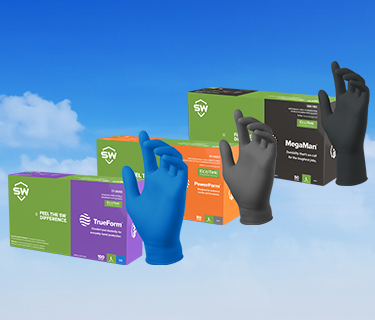Glove Intelligent Assistant
08.23.2023

Global Google searches for topics related to sustainable products increased by around 130% between 2017 and 2022. As we have talked about before on this blog, many companies know that consumers are looking to do their part in protecting the environment by pledging their individual consumption choices on sustainable products. Businesses that employ less than ethical moral business praxis may choose to attempt and green wash their products.
Greenwashing, a term that was previously covered in another article on this blog, is a term used to describe a common marketing tactic to mislead consumers into thinking a product is more sustainable than it actually is. They appeal to consumers who care about the environment without investing in real, environmentally friendly operations. A study done by TheRoundUp found that 79% of the people they surveyed who have heard brands communicating about their sustainability are likely to trust that messaging even if it may not be completely true. Consumers should take care to confirm whether or not a brand is actually enacting sustainable praxis.
Products that truly fulfill the criteria of being environmentally sustainable and marketed to consumers based on that incentive is called green marketing. To quote one of our previous blog posts: the core values of green marketing and green products are centered around sustainable manufacturing. In the manufacturing process, there must be: reduced or zero carbon footprint, reduced or zero water pollution, recycled ingredients or materials, recyclable products, renewable ingredients/materials, eco-friendly packaging, and a reduced or zero plastic footprint. However, a common observation when looking at the market is that green marketed products are often sold at an inflated price versus conventionally marketed products.

Typically consumers will convince themselves that the price is worth the trade off for a more sustainable future. Yet, it can be difficult to determine what consumers are truly paying for. Especially since many companies charge more simply because they can. For daily consumables like produce, it can be easy to leverage a higher priced ‘organically’ grown food. It becomes drastically different with miscellaneous items like reusable beeswax wraps or recyclable plastic shoes, as Alexis Benveniste from Bloomberg quotes.
Kearney published a recent 2020 article stipulating that “…sustainable products, which provide more environmental and social benefits than conventional products do, are an average of 75 to 85 percent more expensive.” Adding onto Nelson’s 2015 study, Kearney found that “[a]cross regions, income levels, and categories, consumers are willing to pay more for sustainable products ….[b]ack in 2015, 66 percent were willing to pay more….[t]oday, that number has reached 80 percent.” Unfortunately, the consequence is that lower income consumers may not be able to afford the green products despite wanting to do so.
Kearney’s study further found that, “[w]hen asked what would help them shop more sustainably 76% of consumers suggested lower prices, 56% said greater choice, while 45% said logos telling them what is sustainable would be useful.” In summary, price seems to be a leading factor, followed by the ability to make an informed choice on the brand of what consumers are buying.

Where does the cost come from if it is not artificially inflated by a business? While the cost can come from many sources in a business’s operations, the most critical component comes from the manufacturing process. Kearney’s study finds that the manufacturing or production process has the biggest impact on sustainability for the end product yet only accounts for about 10 to 30 percent of the final product cost.
They also came to the conclusion that the major price inflation comes from processes that have little to no impact on environment sustainability but rather added on as a premium when sold to customers. With the current mark up on environmentally sustainable goods, it will be hard for the everyday consumer with little income to spare to actually purchase them. Therefore, a bottleneck effect appears, where companies can put less effort into sustainable practices by stating that consumers care about price more. This affects industries moving towards a more sustainable model as well the overall contribution to sustaining the environment.

SW understands that we need to work with our consumers on price and sustainability. We work hard to keep our price competitive in the glove industry so our customers can have affordable personal protective equipment. With more consumers aware of our brand, our environmentally sustainable, sustainable single use gloves can further transform the glove industry. Buying SW tells our industry competitors that high quality, environmentally friendly, but affordable gloves should be the industry standard. Our symbols on our packaging also denote informative third body certifications so our customers can make informed decisions. SW believes in providing high quality and environmentally sustainable products to all our customers.